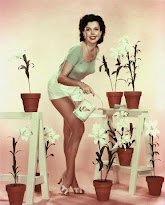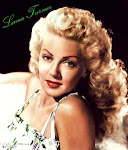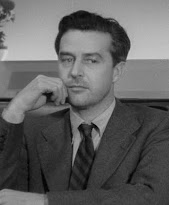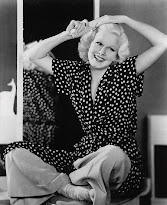There are
some rules on this blog – one of them is that I do not post a review about a
film which is based on a novel until I read said novel. It’s just that I get a
feeling of not knowing the whole story when I do not know the book. It’s like
being not prepared enough – and I want to give you enough information to talk
about a film – and maybe make you want to (re-)watch it..
The film I
talk about today is based on a novel by Jean Redon. Now I have a little
problem: I am not able to get hold of that book. I promised Monty (Some time ago when I watched this film I broke out into songs about it towards him) to review
it this month – I even changed my schedule for this year and do the Mirror
Mirror series now and not later - but I just can’t get that book. But I
promised to write about the film – and a promise doesn’t contain the word
“maybe” – so here we go..
Frankly: I
am happy to finally write about this film! It’s a French-Italian co-production - and it has one of my favourite French and one of my favourite Italian actors..
Here are
some posters for it:
 |
| ~ I don't know the Japanese title.. I guess I have big gap in education there.. ~ |
 |
| ~ There were several German titles for this film - this one here means: THE HORROR HOUSE OF DR. GÉNESSIER.. ~ |
 |
| ~ The original French poster - this motive was used very often - there are also German posters looking like that one. ~ |
 |
| ~ Finally an English poster.. ~ |
Yes.. very obviously this post is about Georges Franju's
LES YEUX SANS VISAGE (1960)
(engl. title EYES WITHOUT A FACE)
A rose by any other name:
There're several alternate titles for this film besides those shown above:
- For the German version the title of this film first was DAS SCHRECKENSHAUS DES DR. RASANOFF (= the horror house of Dr. Rasanoff) and: no, there is actually no character by that name in the original version.. But there was a time when nothing could show better that a person was a meanie than giving him/her a Russian name..
- The
American dubbed version is known under the title: THE HORROR CHAMBER OF DR.
FAUSTUS.. And also no Faustus appears in this film.. The Doctor's name is actually Génessier..

~ I simply adore Alida Valli and Pierre Brasseur.. ~
Famous
surgeon Dr. Génessier (Pierre Brasseur)’s daughter Christiane (Edith Scob) is disappeared.
When a young woman’s body - whose facial skin is missing - is found in a river he
identifies her as Christiane and a funeral is held. (Quite normal and hygienic
way to treat death bodies – I guess..)
But:
Christiane isn’t dead – and Dr. Génessier is very much aware of that: She is
living in his house. After a car crash her face is destroyed so that she has to
wear a mask - only showing her eyes. With the help of his assistant and
ex-patient Louise (Alida Valli) Dr. Génessier is trying to transplant facial
skin from young women’s faces to the face on his daughter to restore her
beauty.
 |
| ~ counterproductive when you're supposed to be dead: calling your unsuspecting fiancé.. ~ |
The problem is: Young ladies don’t spend their faces on their own
intention – and to make it even worse for Dr. Génessier: The operation which
worked on his dogs hasn’t worked yet on his daughter – so he has to try again – which leads to another missing
girl in Paris.. - And then Christiane's fiancé starts thinking - because an anonymous female caller sounds quite a lot like his supposed-to-be-dead-love..
Whatch out
for…
… Alida
Valli – she is the first person you see in this film: the first minutes she is
driving a car with the death body of a girl in the backseat.. Her acting in this film is very calm and low-key. You might know her from THE THIRD MAN (1949).
She is one of my favourite classic Italian actresses - the others are Giulietta Masina, Anna Maria Alberghetti, Pier Angeli and Anna Magnani. Of course I also like Gina Lollobrigida and Sophia Loren.. But just not as much as those.. A smidge less maybe..
 |
| ~ Alida Valli in 1940's: a ravishing beautiful woman with a huge talent .. ~ |
…Pierre Brasseur - such a versatile and just overall marvellous actor.. - and quite handsome, too.. his performance as Dr. Génessier is fantastic. You may know him from LES ENFANT DU PARADIS/CHILDREN OF PARADISE (France, 1945)..
 |
| ~ Pierre Brasseur years before LES YEUX SANS VISAGE - a dashing and very versatile actor with a wonderful smile in his eyes.. ~ |
Schmooze:
- According
to film-critic Bruno Gay-Lussac of L’EXPRESS there were cases of fainting when
the film was showed during Edinburgh Film Festival.. It is said that Georges Franju
responed to those faintings with “Now I know why Scots wear skirts.” Frankly: I am not sure I get that one..
- Edith Scob was almost unknown when she made this film. She worked with Georges Franju before in his first full-length film LA TÊTE CONTRE LES MURS/ HEAD AGAINST THE WALL (1959) – which also featured Pierre Brasseur.
- LES YEUX SANS VISAGE was Franju's second full-length movie. He was sort of fascinated of Edith Scob. It was kind of a love affair - but more in a sublime way – nothing sexual at all.
- It is said
that Franju had to change some things of his original idea for this film to
please the censors: For the French censors less blood and gore – for the German
censors less maniac scientist stuff (there was/is still a awareness here of a
certain era when doctors/professors were experimenting on human beings in
concentration camps..) and for the English censors the scenes in which animals
were tortured/in pain should be as less as possible. (I am very much with the English..)
- The Billy Idol song EYES WITHOUT A FACE has borrowed the English and French title of this film – but hasn’t any further connection to it.

~ dreaming of a normal life ~ - John
Carpenter suggested that the idea for HALLOWEEN (1978) character Michael Myers’ mask came from
the mask used in EYES WITHOUT A FACE.
- To have the operation as realistic as possible there was frequently a surgeon around who helped the actors by telling them what to do - and which moves a real surgeon couldn't/wouldn't make during this kind of operation. (And please believe me: It looks like real..)
- It was Pierre Brasseur who told Georges Franju about this story – and animated him to make a film out of it.
- For the German and also for the US version the explicit operation scene was cut out. To make Dr. Génessier appear less likeable for the American version also some dialogue scenes were cut out - esp. one scene in which he cares for a little boy.
- The film was released in the USA in a double feature with Japanese film THE MANSTER (1959).
 |
| ~ This will be the only picture you'll get here of the operation scene. Simply due to respect towards my not so "hardboiled" readers. ~ |
It'll stay in
the family:
Pierre
Brasseur’s son Claude Brasseur is also appearing in this film as an inspector.
I think it’s easy to spot the familiar looks. (I prefer Pierre Brasseur though.. but that's just me..)
Up to the
screen:
As I said
before: I haven’t read the book yet. – There are apparently many
meanderings
- THESE ARE NOT IN THE MOVIE:
- Unlike the film in the book
Dr. Génessier’s assistant is a male maniac and addicted to morphine. He grows
roses – and rapes the corpses of the young females he organizes for his
boss. (hm.. nah.. really don't want to see that.)

~ Dr. Génessier (Pierre Brasseur) - loving father and dangerous doctor.. ~
- Dr. Génessier apparently is in the book addicted to alcohol – and responsible for the car crash which destroyed his daughters face.
- In the book Dr. Génessier is arrested by the police – and his daughter jumps out of the window of her room to die in a puddle of blood right in front of her father’s eyes.
 |
| ~ Edith Scob, Alida Valli and Georges Franju - rehearsing a scene. ~ |
In their
own words:
Director
Franju described his film to be no horror film but "anguish ... it's a quieter mood than horror... more internal, more penetrating. It's horror in homeopathic doses."
 |
| ~ Georges Franju and Juliette Mayniel - the missing girl Edna (already missing her face) ~ |
What the critics said:
- When the film was released the critics were in the main not too positive. Some declared it to be a mimicry of German Expressionism - others just were disappointed that Georges Franju didn't stay a documentary film maker - and even worse: worked on such a "minor genre" - which obviously wasn't appropriate to his abilities at all..
- British critic Isabel Quigly for SPECTATOR wrote about it: "...the sickest film since I started film criticism."
- VARIETY considered it "old-fashioned".
 |
| ~ Louise - loosing her nerves ~ |
- There are rumours that a French critic who wrote that she liked the film nearly lost her job. Other sources state that said critic was British - but I wouldn't consider that important at all.
- When the film was re-released in France 1986 and in USA 2003 (there for the first time in the originally edited version) the critics were mainly hailing it's poetic style and calling it beautiful.
 |
| ~ behind bars.. ~ |
Claws and paws:
There're many dogs in this film. Dr. Génessier is testing skin transplantation on dogs - but you will see just the final result - no harm done to animals.
 |
| ~ Poor Christiane's only friends appear to be the dogs of her father.. ~ |
Let's face the music:
The score was written by Maurice Jarre - who later created the music for some very, very short films like e.g. LAWRENCE OF ARABIA (1962) and DOCTOR ZHIVAGO (1965)..
In my opinion the music of this film is great. While Louise's theme sounds partly a bit like carnival/cirucs music - in a slower and maybe because of that a bit sad appearing tempo which makes it quite haunting - Christiane's theme (= "THÈME ROMANTIQUE") is reminding me of a musical clock's melody..
I think this melody - together with Edith Scob's partly very elegant and elfin moves are giving this film its "poetic air".
You can listen to THÈME ROMANTIQUE here - also if you are not good at all with horror movies! - But maybe you should try to NOT watch the last seconds when the music fades out: After Christiane went into the forest you might catch otherwise a glimpse of her "actual" face - very quick and kind of blurry.. but still.. I don't want you to be scared at all.. (Another rule of this blog: Don't give your readers nightmares!)
The clip shows a montage of some of Christiane's scenes - oh: You can see the dogs here!!
This music is just great - isn't it?
~ Don't be afraid: There are just a few sentences in French in the beginning - after that it's "wordless"..
Craving for
more?
- I swear that I wasn't aware that a film by the title SAVING FACE (2012) was nominated for the ACADEMY AWARDS - or going to win... - when I started to write this post yesterday - and I never guessed that today this post would be that actual:
SAVING FACE (2012) is a short documentary about women in Afghanistan who were atacked with acid - I cannot even try to say how much I detest this treatment of animate beings. This film shows some of the victims and how they try to save their face - partly via skin transplantation.. This is a really important topic - too important: It needs it's own post. I hope to see that film one day - and I am sure I will write about it then.
EYES WITHOUT A FACE influenced some other (horror) films – and some of those have quite a similar story
– mostly just differing in the relations of the protagonists. Anyway – if you’re
interested you could watch:
- GRITOS EN LA NOCHE (1962) - a Spanish/French film.
- FACELESS (1988) with Helmut Berger.
- ATOM AGE VAMPIRE (1961) – an Italian film.
- CORRUPTION (1968) is a British film – here the doctor tries to help his fiancée by using extracted fluids from his victims. (nice, huh?)
- If you are fond of face transplantations: John Woo’s FACE/OFF (1997) is said to be influenced by the famous transplantation scene in EYES WITHOUT A FACE. There're also rumours that John Woo's trademark of white doves is a reference to the Franju film..
 |
| ~ leaving the cage.. ~ |
Quotes
corner:
“Smile –
but not too much.”
This film
lives more by it visuals than by its dialogues. This lack of long monologues
adds kind of a non-emotional air. When –
showed in kind of a photomontage - Christiane’s faces rejects the other girl’s
skin we can hear Dr. Génessier commenting it in a very scientific manner.
 |
| ~ Great make up: showing how the new skin is rejected by Christiane's body.. ~ |
Mirror
Mirror..
This film fits into the Mirror Mirror series because
it deals with a father who will do anything to give his daughter back her
prettiness. People do a lot for their looks – from healthy food and
sports to plastic surgery. Sometimes it is necessary – sometimes it’s not.
In a
maybe very naïve way I believe that beauty isn’t as important as the life and
health of other beings. Maybe appearing
not as drastic as killing human beings to get their skin but also not right in
my book: testing cosmetics on animals.
This counts of course for each and everything one
could “test” on animals. - Well.. though I think that it isn’t right to make medical tests on animals I am aware of
the help it means for so many people – still I am very, very sad that I can’t
think of a more civil and wholesome better solution for this problem. There must be another way – don't you agree?
 |
| ~ Paulette (Béatrice Altariba) - a new face? ~ |
I think that the story would be completely different when Christiane would have been a male character. A female with an ugly resp. unattractive face might have more troubles to be accepted in society than a male one.
Apparently one of the "jobs" of human females is to please the eye of the (male) viewer.. Just try to think about how many "ugly" actresses you know - and how many "interesting looking" male actors on the other hand - who are not at all handsome.. Which group contents more names? I am not calling for more "pretty boys" or more "ugly girls" - I am just wishing for less importance of "good" looks.. - irrational? Yes.. I know..
And besides: how often are the things one (and I do not exclude me from this) writes/says about actresses just limited to her looks? ... Frankly - sometimes it's all one can say about them.. but NOT ALWAYS.. Well.. I think by now you know what I mean.. And after all: Of course films are a visual medium.
 |
| ~ quite iconic image: Christiane in her light coat. Her whole costumes were designed by Hubert de Givenchy. ~ |
Fraidy cat - like me?
There are less bloody scenes than one would expect. In the whole this film is more an intelligent suspense and horror film than throwing gore and bowels at your face..
The facial surgery for sure is quite realistic - and by that kind of horrid. It's played very well - and maybe because of that so haunting. So if you are not good with that you might look out for the cutted version.. Or watch it with someone who can tell you when it's over... Then we have about three death scenes which are quite drastic:
*SPOILER*SPOILER*SPOILER*SPOILER*SPOILER*SPOILER*SPOILER*SPOILER*
Louise is stabbed to death (very well and quietly acted - very impressive), Dr. Génessier is dismembered by the dogs and one of the missing girls jumps into death..
*SPOILER*SPOILER*SPOILER*SPOILER*SPOILER*SPOILER*SPOILER*SPOILER*
I admit that I love this film though I am no big fan of gore at all. This film might be setted in late 1950's Paris - but it appears to be kind of a timeless, dark and gloomy fairytale - which I think is mainly owed to the music.
Edith Scob once stated that because of the mask she had to wear she felt very separated from the other actors - and that she had to show her emotions more via her body language than via talking or facial expressions. She actually has an unbelivable frail face - almost transcendental (if you forgive me this kind of description.. and: yes, I am talking about her looks here..) - her movements in this film are partly like those from a ballerina - kind of flowing and also a bit "surreal".
The mask part is a well-know feature for horror films - just remember a certain Phantom.. The lack of facial expressions and by that apparently emotions at all leads to a feeling of being uncomfortable from the audience's point of view. I think this might be about how an autistic person must feel - unable to see what other people feel. We express so many of our emotions about our face that missing that part of communication can be quite horrible..
Thank you so very much for listening!
Yours very well and truly
Irene


















































_03.jpg)




































































What a tremendous post Irene! Very well done. And thanks for the mention of me.
ReplyDeleteThank you very much, Monty. And: You're welcome.
ReplyDeleteI love your reviews (I'm awful at reviewing movies myself). I've always been curious about this movie, but now I've GOT to see it! Thanks :-)
ReplyDeleteAww.. Thank you so much, Pefect Number 6! I for one love your posts. - sorry for the lack of commenting lately.. I am still following! ;")
ReplyDeleteHope you'll enjoy this film! I really think it's great.. But on the other hand: I am a bit in love with Pierre Brasseur.. ;")